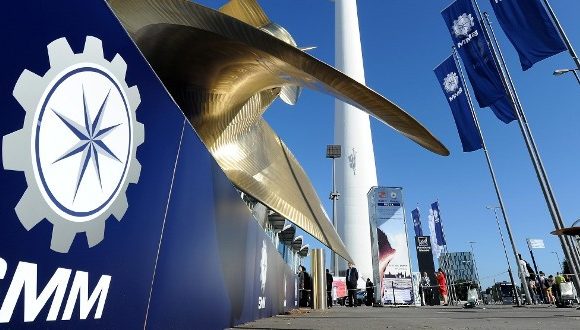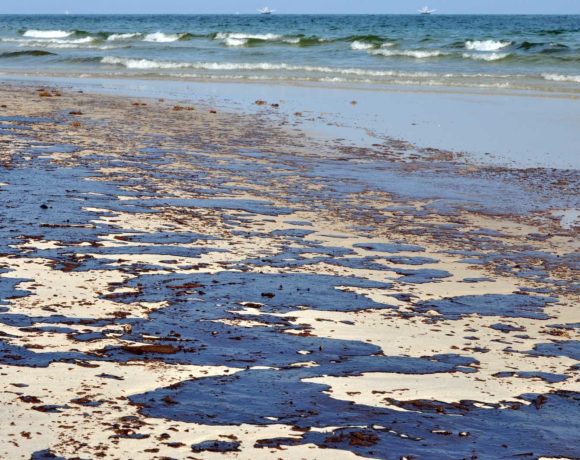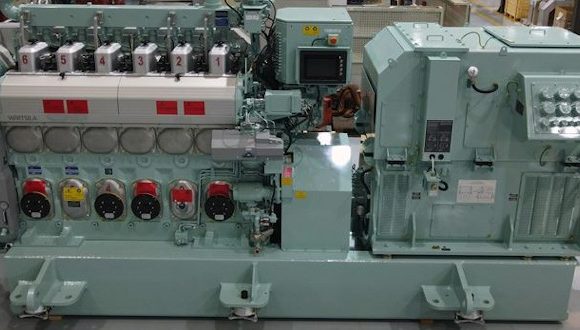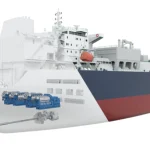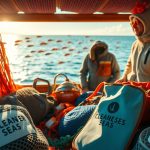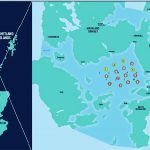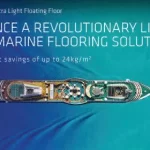Top Sustainable Marine Products: From Recycled Plastics to Eco-Friendly Fishing Gear
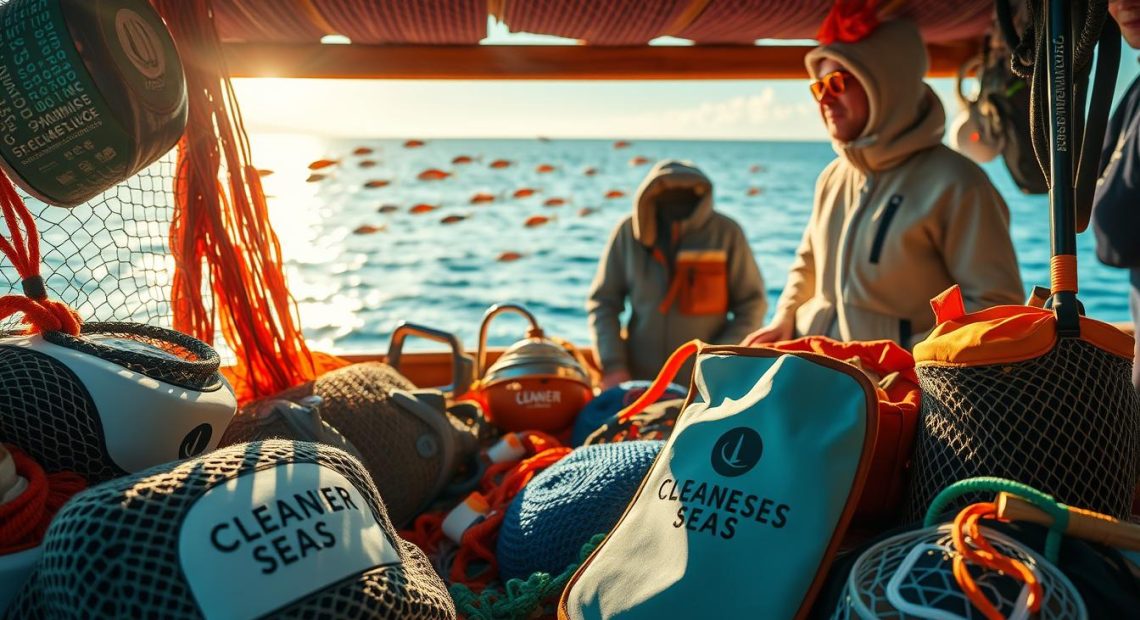
The maritime industry is seeing a big change with sustainable marine products. These products tackle ocean pollution head-on. Items like sunglasses, bracelets, and bike accessories are made from recycled materials that used to harm our seas.
Ghost fishing gear is a big problem, adding 640,000 tonnes of plastic to our oceans every year. These lost nets and lines can harm marine life for over 500 years. Companies like Waterhaul are leading the way with traceability systems. This lets them track 100% recycled ocean plastic back to where it was found.
The UK’s long coastline shows how important it is for marine conservation. The government has a 25 Year Environment Plan to cut down marine plastic pollution. This plan supports recycling, which is key for sustainable marine products. It helps keep our oceans clean and supports over 120,000 jobs in the UK’s waste and recycling sector.
Key Takeaways
- Sustainable marine products are key in fighting ocean pollution
- Recycled fishing nets are turned into various goods
- Ghost fishing gear is a big problem for marine plastic pollution
- Traceability systems make recycled ocean plastics more accountable
- UK government initiatives support marine conservation and recycling
- The waste and recycling sector is vital to the UK’s economy
Understanding Sustainable Marine Products
Sustainable marine products are key to saving our oceans. They include eco-friendly seafood, fishing done right, and gear from recycled stuff. The goal is to keep our seas healthy while we use them.
Definition and Importance
These products are made or found with little harm to the environment. The Marine Stewardship Council (MSC) says fishing should let enough fish for the future. This way, we:
- Keep fish numbers healthy for them to grow
- Don’t hurt the sea too much
- Manage fishing well
The MSC blue fish label shows seafood is caught right. It means the fish is from the wild, checked by experts, and safe to eat. This label gives shoppers peace of mind.
The Role of Marine Health in Sustainability
Keeping the sea healthy is key to being sustainable. Fishing the right way helps keep fish and sea life diverse. If we fish too much, like in Canada’s Grand Banks, it can be very bad.
Now, over 10 million tonnes of seafood come from MSC certified fisheries. This started in the 1990s. It shows how important it is to protect our oceans and the jobs they support. By picking eco-friendly seafood, we help keep the sea healthy for everyone.
Types of Sustainable Marine Products
The push for ocean conservation has led to new products that protect our seas. These products range from everyday items to industrial materials. They are making a big impact in different areas.
Key Categories of Eco-Friendly Marine Goods
Sustainable marine products come in several types:
- Consumer goods: Sunglasses and bracelets from recycled fishing nets
- Industrial materials: Carpet tiles and recycled nylon pellets
- Seafood: Fish and seafood from responsible sources
Examples of Innovative Marine Products
Aquaculture innovations are leading the way in sustainable seafood. The Marine Stewardship Council (MSC) blue fish tick shows wild-caught seafood is safe. The Aquaculture Stewardship Council (ASC) green label marks farmed seafood that’s good for the planet.
In the industrial world, old fishing nets are turned into strong materials. This method cuts down on ocean pollution and gives waste new life. Products like sunglasses made from ocean plastics are stylish and eco-friendly. They show that caring for the ocean can be both useful and trendy.
The Impact of Plastic Pollution on Oceans
Plastic pollution is a big threat to our oceans. It harms marine life and messes up ecosystems. The problem is huge, affecting how we protect marine ecosystems and source sustainable seafood.
Alarming Statistics
The numbers show how bad our oceans are:
- Over 460 million metric tons of plastic are produced every year worldwide
- About 20 million metric tons of plastic litter enter the environment each year
- By 2050, plastic could outweigh all fish in the sea
- Only 9% of plastic waste is recycled globally
Urgent Need for Change
These facts show we need to change fast. In the EU, 27% of marine litter is plastic fishing gear, and single-use plastics make up 43%. This pollution hurts our efforts to protect marine ecosystems and makes sustainable seafood hard to find.
We must use eco-friendly practices in fishing and seafood production. Using sustainable seafood sourcing and cutting down plastic use in fishing are key steps. They help keep our oceans healthy and ensure marine ecosystems can thrive for a long time.
Recycled Plastics in Marine Products
Recycled plastics are becoming more popular in marine products. This is a big step towards cleaning our oceans. It also helps make seafood supply chains more traceable.
How Recycled Plastics are Used
Recycled plastics are used in many marine products. This includes fishing gear and parts for boats. Now, up to 80% of fishing gear can be made from recycled materials.
The demand for these eco-friendly products is growing fast. It’s expected to increase by 12% from 2023 to 2030.
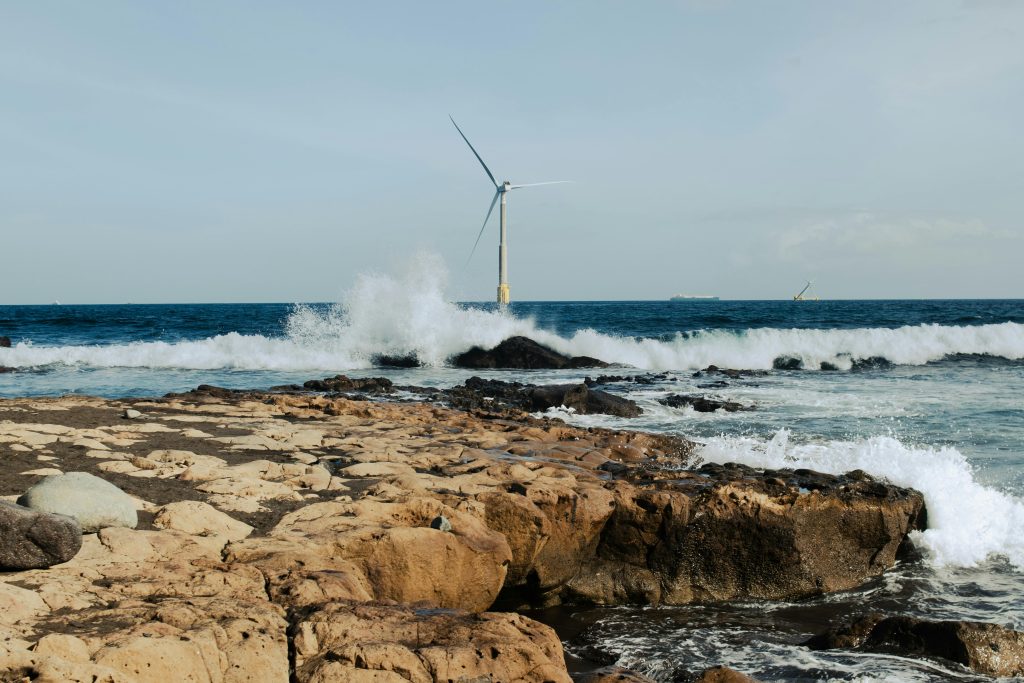
Benefits of Recycled Plastics
Using recycled plastics in the sea has many benefits:
- It helps the environment by reducing CO2 emissions by 1.5 tonnes per tonne compared to new plastics.
- It cuts down waste by turning 60% of ocean plastics into useful products.
- Most consumers, 75%, are ready to pay more for products made from recycled materials.
Companies are at the forefront of this green movement. For example, CirculenRecover PPC TRC 2179N lets us use recycled sea plastic in moulding. This helps the marine and car industries use more recycled materials.
This move towards recycled plastics is a big step. It makes seafood supply chains more sustainable and traceable. As rules and demand grow, we’ll see more creative uses of recycled materials in the sea.
Eco-Friendly Fishing Gear
The fishing industry is moving towards more sustainable practices. This is in response to growing concerns about the health of our oceans. New eco-friendly fishing gear is leading the way towards a greener future.
Innovations in Fishing Equipment
Biodegradable fishing nets and lures are key innovations. These nets and lures break down much faster than old ones. This means they don’t harm the ocean for as long.
Old fishing lines were made from plastic. Now, we have biodegradable ones. These new lines are strong but don’t harm animals. This is important because many fish stocks are overfished.
Benefits of Eco-Friendly Gear
Using eco-friendly gear has many advantages:
- Less bycatch and ghost fishing
- Lower carbon footprint than land-based food
- Healthier fish and better biodiversity
- Long-term economic gains
By choosing eco-friendly gear, the fishing industry can grow. It could produce 16 million more tonnes of seafood each year. This would feed 72 million people. It’s good for the planet, our wallets, and our conscience.
Sustainable Seafood Practices
The seafood industry is vital for global nutrition, feeding 3 billion people. Sustainable seafood sourcing is now key. The UK spends £5.7 billion on fish and seafood each year, showing the need for eco-friendly practices.
Ethical Sourcing and Certification
Sustainable seafood means using methods that harm the environment less. The Marine Stewardship Council (MSC) and Aquaculture Stewardship Council (ASC) help by promoting transparency. In 2021, MSC certified over 40 million metric tons of seafood, a 20% jump from 2020.
Key Sustainable Seafood Products
The global seafood market focuses on five eco-friendly types:
- Shrimp
- Tuna
- Salmon
- Tilapia
- Pangasius
These species account for over 60% of the market. Sustainable methods for these include responsible farming and fishing. Some farmed species, like pangasius, need little marine feed, making them green choices.
More people want sustainable seafood, with 71% of global consumers choosing it. This has boosted sustainable seafood sales to £138 billion in 2021, a 20% rise from 2020.
Innovative Packaging Solutions
The packaging world is changing fast, with new ideas to protect our oceans. These new ways are making packaging better, mainly for seafood and marine products.
Biodegradable Packaging Options
Biodegradable materials are leading the way in green packaging. Polylactic acid (PLA) is used in food packaging and breaks down easily. It’s good for companies wanting to cut down on carbon emissions.
Polyhydroxyalkanoates (PHA) can even break down in the sea. This helps fight ocean pollution from plastic.
Seaweed packaging is a cool new option instead of plastic wraps. It’s good for the planet because it’s biodegradable and can even be eaten. Seaweed also helps fight climate change by soaking up carbon dioxide.
Mushroom packaging is another smart choice. It naturally breaks down in 30 to 90 days without harming the environment.
Benefits of Sustainable Packaging
Switching to green packaging has many advantages:
- Less plastic waste in oceans
- Plastics break down faster than usual
- Companies can reduce their carbon footprint
- Better waste management
Companies like OceanPackage are making big strides with reusable cases. These cases are made from at least 30% recycled plastic from the ocean. They use over 80% recycled materials, moving towards a circular economy.
As more people want eco-friendly choices and laws get stricter, green packaging will become more common. This change, along with ongoing research, looks promising for our oceans and marine life.
Marine Conservation Efforts
The UK’s marine environment is facing big challenges. Ocean conservation and marine sustainability are key to protecting our seas. The current state of our waters is alarming, showing the need for urgent action.
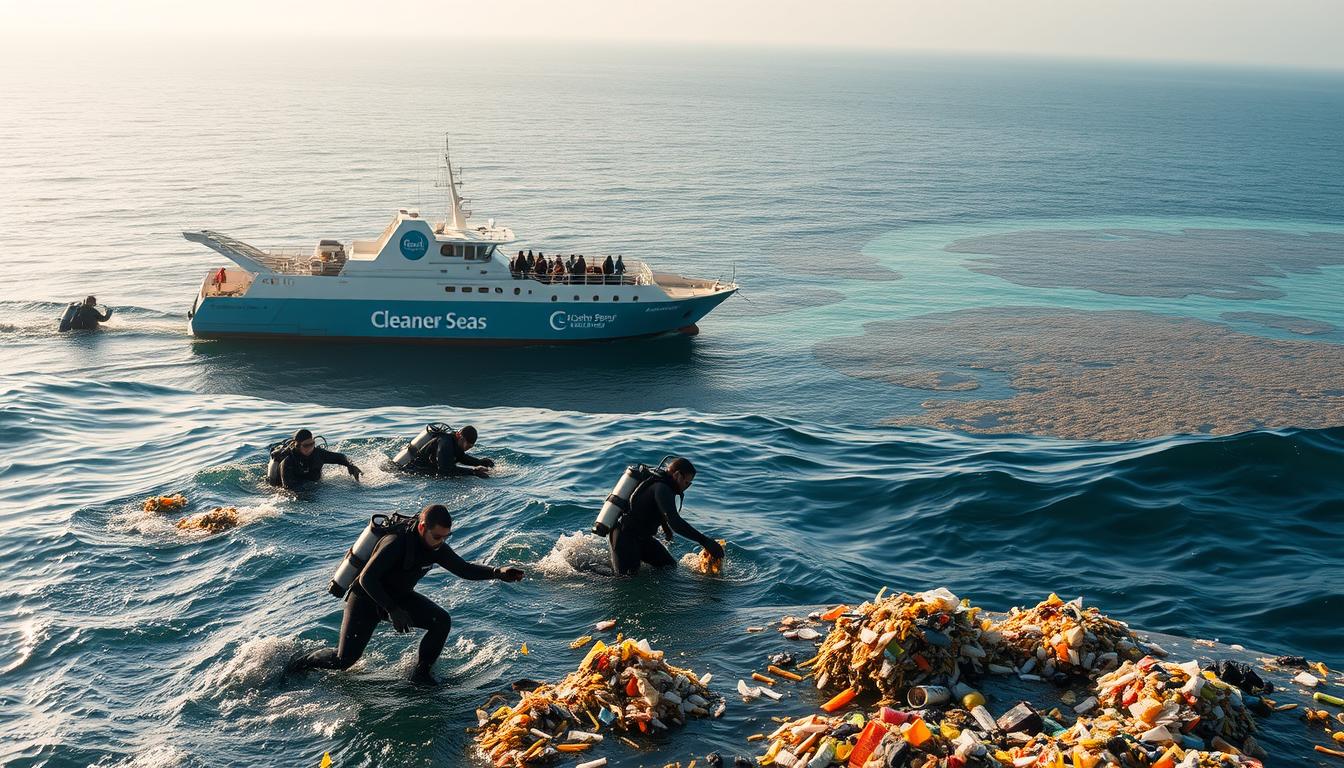
Initiatives Promoting Sustainable Practices
Many organisations are leading the fight to save our oceans. Healthy Seas and Ghost Diving are working hard to clean up lost fishing nets. They also push for sustainable practices in the marine industry.
Two-thirds of UK fish stocks are overfished or depleted. But, if we let fish stocks recover, we could see a big boost. We could get 45% more fish and create 4,900 new jobs. This shows how marine sustainability can benefit our economy.
Community Involvement in Conservation
Local communities are key to saving our oceans. Their actions help protect marine ecosystems worldwide. For example, over 800 million meals a year are served by sustainable fish catering companies.
- The Marine Stewardship Council (MSC) checks if fisheries are sustainable. They look at fish stocks, environmental impacts, and management.
- Sustainable fishing helps control the climate. It traps carbon dioxide in the ocean.
- More than a third of the world’s population eats seafood. This shows how vital sustainable fishing is.
Together, we can make our marine ecosystems healthy again. This will benefit both our environment and economy.
The Role of Businesses in Sustainability
Businesses are key in promoting sustainable marine products and fishing practices. The UK’s marine economy boosts growth in coastal areas. It shows how vital it is to the country’s economy. With more people wanting fish, companies are finding ways to meet demand while staying green.
How Companies Can Go Green
Businesses can go green by:
- Using eco-friendly fishing gear and methods
- Getting supplies from certified sustainable fisheries
- Switching to renewable energy for their operations
- Choosing sustainable packaging options
- Improving how they track their supply chain
These steps help the environment and make brands more appealing to green consumers. Yet, there are hurdles like unclear rules and limited funds in marine sectors.
Case Studies of Leading Brands
Some companies are leading the way in ocean sustainability:
- Adidas: Makes shoes from recycled ocean plastics
- Interface: Makes carpets from recycled fishing nets
- Thai Union Group: Wants all branded tuna to come from sustainable sources
These brands show how innovation can help marine conservation and keep businesses profitable. By focusing on green fishing and sustainable products, companies can protect our oceans for the future.
Future Trends in Sustainable Marine Products
The maritime industry is moving towards a greener future. New technologies are leading the way for better solutions. This change will transform marine products and seafood supply chains.
Emerging Technologies
Aquaculture innovations are leading this change. New methods for recycling marine plastics are being developed. These could turn ocean waste into valuable resources, reducing pollution and creating new materials.
Traceability in seafood supply chains is also advancing fast. Blockchain technology is being used to create clear, secure records of seafood. This improves food safety and fights illegal fishing.
Industry Predictions
The future of sustainable marine products looks bright. Experts say we’ll see more eco-friendly fishing gear soon. This gear will help protect marine life and reduce waste.
We’ll also see more seafood products with sustainability labels. This is because more people want to buy responsibly sourced food.
- Increased adoption of renewable energy in fishing fleets
- Growth in plant-based and lab-grown seafood alternatives
- Development of biodegradable fishing gear
As these trends grow, the marine products industry will change. It will aim to grow economically while protecting the environment. The big challenge is getting everyone to use these new technologies worldwide.
Consumer Choices and Sustainable Living
Making smart choices about marine products is key to protecting our oceans. As consumers, we can influence change by what we buy.
Choosing Sustainable Marine Products
When you shop for eco-friendly seafood, look for the Marine Stewardship Council (MSC) blue ecolabel. In the UK, spending on certified sustainable seafood hit £1.5 billion in 2023/24. This is a 12% jump from the year before. It shows more people care about protecting marine ecosystems.
- Choose local seafood caught with sustainable methods to reduce carbon footprint
- Opt for species lower on the food chain, like oysters and mussels
- Avoid overfished species such as bluefin tuna and Atlantic halibut
Educating Consumers on Sustainability
Knowing what to choose is important. In 2023, 51% of UK consumers knew about the MSC blue ecolabel. This knowledge helps them make better choices. Joining local beach cleanups and supporting sustainable fishing also helps protect our oceans.
By picking sustainable marine products and adopting green habits, we can all help the ocean. Every time we buy, we’re moving towards a greener future for our seas.
Conclusion and Call to Action
The need for sustainable marine products and ocean conservation is urgent. Coastal seabeds are heavily disturbed, mainly due to bottom trawling. The European Commission aims to protect 30% of EU marine waters by 2030, showing the way forward.
Summary of Key Points
This article has shown the many ways to protect our oceans. Eco-friendly fishing gear and sustainable seafood practices are key. The Marine Stewardship Council (MSC) and Aquaculture Stewardship Council (ASC) eco-labels help us make better choices.
Encouraging Sustainable Choices
Our choices have a big impact. More people are willing to pay more for sustainable products, thanks to millennials and Gen Z. By choosing certified sustainable products, we help protect our oceans. Let’s make choices that benefit our marine ecosystems for the future.
FAQ
What are sustainable marine products?
How do sustainable marine products contribute to ocean conservation?
What types of products can be made from recycled ocean plastics?
How can consumers identify sustainable seafood products?
What are some examples of eco-friendly fishing gear?
How are businesses incorporating sustainable marine products into their operations?
What are some innovative packaging solutions for marine products?
How can individuals support marine conservation efforts?
What are some future trends in sustainable marine products?
How does aquaculture contribute to sustainable marine products?
Source Links
- https://waterhaul.co/ – Recycling Ocean Plastic & Ghost Fishing Gear into sustainable products
- https://waterhaul.co/blogs/traceable-marine-plastic-articles/fishing-net-recycling-in-the-uk-turning-ocean-waste-into-opportunity – Fishing Net Recycling in the UK: Turning Ocean Waste into Opportunity
- https://www.msc.org/en-us/what-you-can-do/blue-fish-guide – Blue Fish Guide to Sustainable Seafood | Marine Stewardship Council
- https://www.msc.org/en-au/what-we-are-doing/msc-theory-of-change/what-is-sustainable-seafood – What is sustainable seafood
- https://www.msc.org/en-au/what-you-can-do/eat-sustainable-seafood/sustainable-seafood-guide – Sustainable Seafood Guide
- https://www.energy.gov/eere/bioenergy/sustainable-marine-fuels – Marine Biofuels
- https://education.nationalgeographic.org/resource/sustainable-fishing/ – Sustainable Fishing
- https://iucn.org/resources/issues-brief/plastic-pollution – Plastic pollution
- https://oceanliteracy.unesco.org/plastic-pollution-ocean/ – Ocean plastic pollution an overview: data and statistics
- https://theoceancleanup.com/ocean-plastic-pollution-explained/ – Ocean Plastic Pollution Explained | The Ocean Cleanup
- https://waterhaul.co/pages/traceable-marine-plastic-pellets – Traceable Marine Plastic Pellets | Sustainable & UK-Made | Waterhaul
- https://www.lyondellbasell.com/en/news-events/products–technology-news/lyondellbasell-introduces-new-plastics-made-from-recycled-marine-waste/ – LyondellBasell introduces new plastics made from recycled marine maritime gear
- https://plaskolite.com/blog/detail/Sustainable-Plastic-Products-for-the-Marine-Industry – SUSTAINABLE PLASTICS PRODUCTS FOR THE MARINE INDUSTRY
- https://www.coastkeeper.org/eco-friendly-fishing-gear/ – Top Biodegradable Gear for Eco-Friendly Fishing – Orange County Coastkeeper
- https://www.msc.org/what-we-are-doing/our-approach/what-is-sustainable-fishing – What is sustainable fishing
- https://goldenmateenergy.com/blogs/goldenmate-blog/how-sustainable-fishing-gear-benefits-the-environment-and-economy?srsltid=AfmBOor_Yv1qj90N4chm_Ea9BKpUEzS56S9FAw225AcfLzuoxKqlmKpP – How Sustainable Fishing Gear Benefits the Environment and Economy
- https://www.oceanicsociety.org/resources/blue-habits-tips/7-rules-for-choosing-sustainable-seafood/ – 7 Do’s & Don’ts for Choosing Sustainable Seafood
- https://www.wwf.org.uk/what-we-do/addressing-unsustainable-fishing-and-seafood – Supporting sustainable fishing practices
- https://corporate.marksandspencer.com/sustainability/our-products/aquaculture-and-fisheries – Aquaculture and Fisheries
- https://www.packaging-gateway.com/news/innovative-packaging-materials-for-sustainability/ – Innovative packaging materials for sustainability
- https://ima.it/en/innovative-reusable-packaging-solutions-together-with-ocean-package/ – Innovative REUSABLE packaging solutions together with Ocean Package.
- https://www.sustainweb.org/climatechange/sustainable_fishing_and_marine_conservation/ – Sustainable fishing and marine conservation | Sustain
- https://www.gov.scot/publications/supporting-economic-social-environmental-sustainability-uks-marine-sectors/pages/6/ – Supporting the economic, social and environmental sustainability of the UK’s marine sectors
- https://oceanogami.com/unlocking-the-sustainable-blue-economy-how-businesses-can-make-a-positive-impact-on-the-environment/ – Unlocking the sustainable blue economy: How businesses can make a positive impact on the environment – Oceanogami
- https://tanveernaseer.com/crafting-sustainable-seafood-business-model/ – Crafting A Sustainable Seafood Business Model
- https://www.greenjournal.co.uk/2023/09/7-trends-and-innovations-in-maritime-sustainability/ – 7 Trends And Innovations In Maritime Sustainability | Green Journal
- https://www.msc.org/what-you-can-do/eat-sustainable-seafood/five-sustainable-seafood-trends-2023 – 5 Sustainable seafood trends for 2023
- https://www.eea.europa.eu/en/analysis/publications/healthy-seas-thriving-fisheries – Healthy seas, thriving fisheries: transitioning to an environmentally sustainable sector
- https://www.msc.org/uk/media-centre/press-releases/press-release/uk-shoppers-backing-sustainable-fish-despite-cost-of-living-crisis – UK shoppers backing sustainable fish despite cost of living crisis
- https://www.oceanicsociety.org/resources/what-is-sustainable-seafood-and-how-do-i-choose-it-your-top-questions-answered/ – What Is Sustainable Seafood and How Do I Choose it? Your Top Questions Answered
- https://zerowastecenter.org/a-guide-to-sustainable-living-for-ocean-conservation/18978/ – A Guide to Sustainable Living for Ocean Conservation
- http://www.marinebiodiversity.ca/2024/10/5-reasons-marine-lovers-are-diving-into-sustainable-products/ – 5 Reasons Marine Lovers are Diving into Sustainable Products – Marine Biodiversity Science Center
- https://www.europarl.europa.eu/RegData/etudes/BRIE/2023/747917/EPRS_BRI(2023)747917_EN.pdf – Action plan to protect marine ecosystems for sustainable fisheries
- https://www.aquafeed.co.uk/sustainable-fisheries-workshop-highlights-need-for-sustainable-policies/ – Sustainable Fisheries Workshop Highlights Need for Sustainable Policies – International Aquafeed

